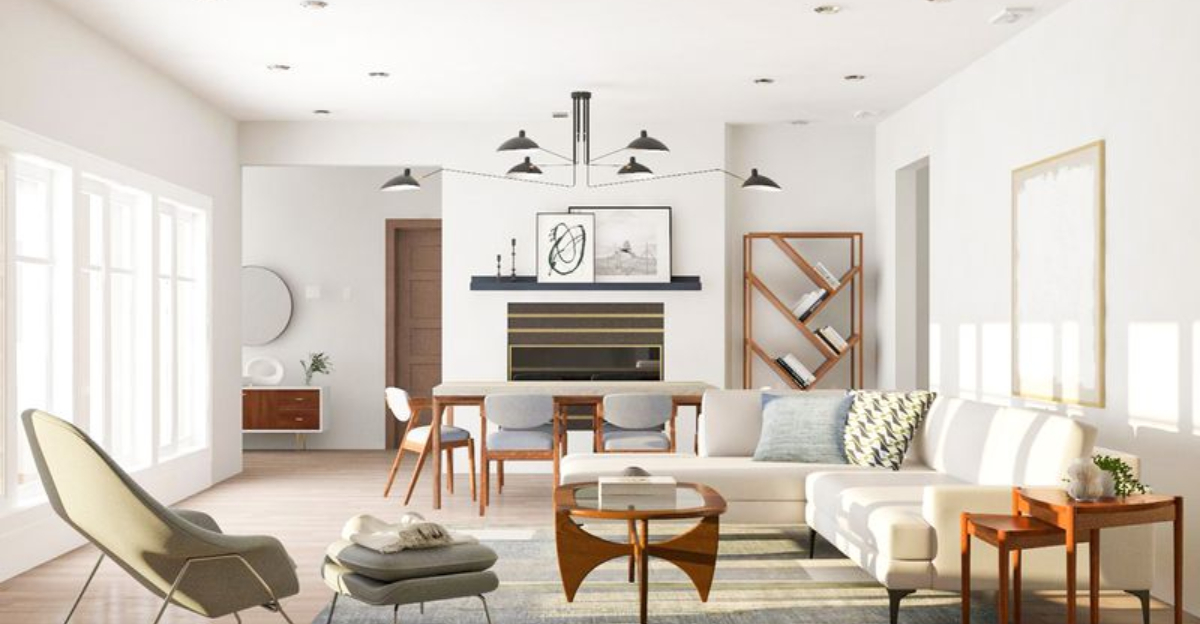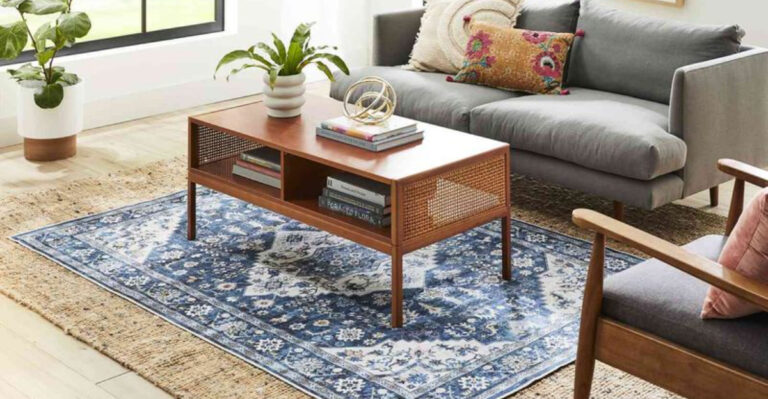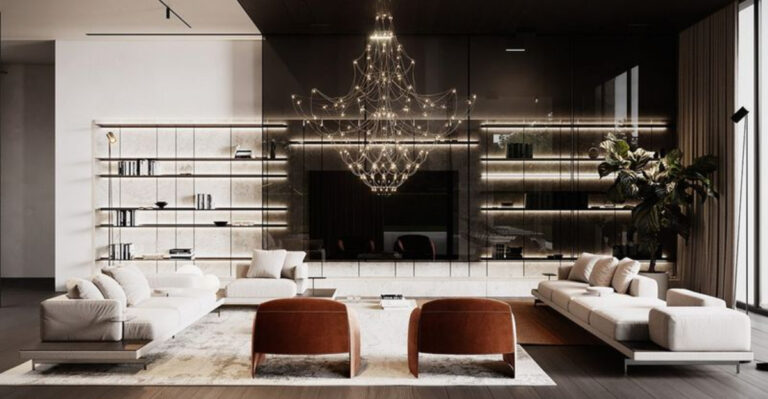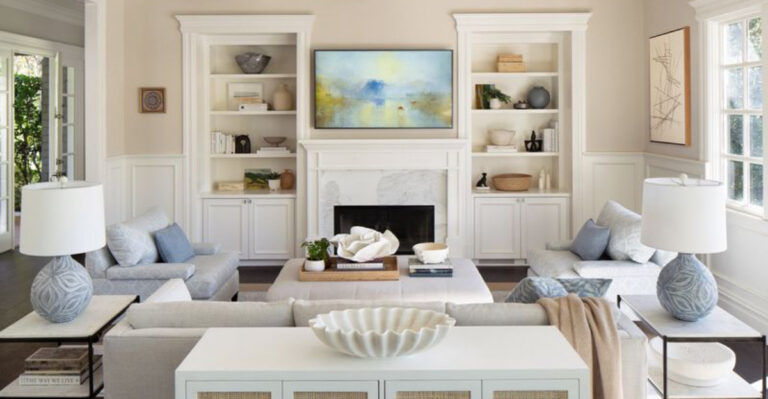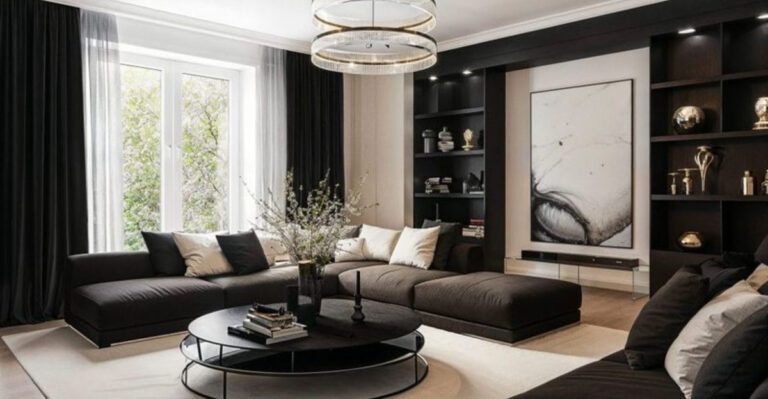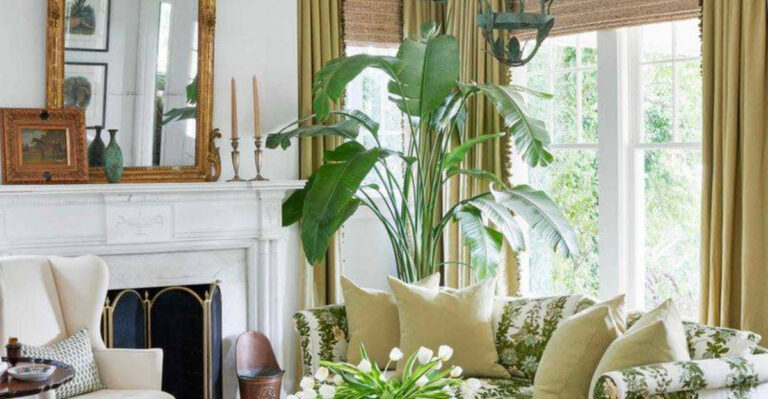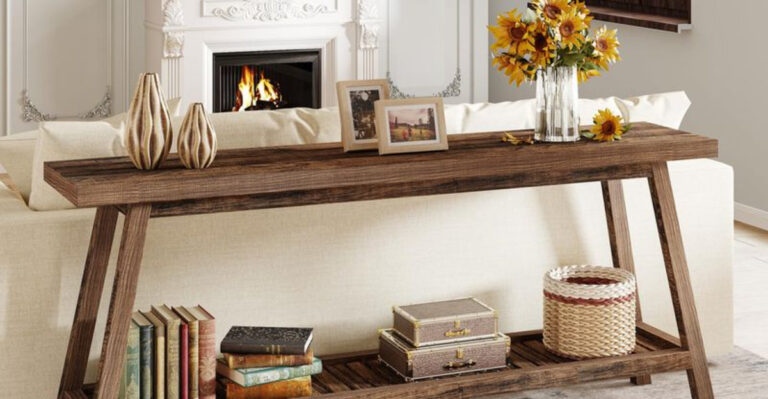17 Tips From Designers To Help You Style A Long Living Room
Long living rooms can be tricky to style. With awkward dimensions and challenging layouts, many homeowners struggle to create a space that feels both cozy and functional.
Professional designers have mastered techniques to transform these stretched spaces into beautiful, balanced rooms that maximize every inch while maintaining style and comfort.
1. Divide the Space Into Zones
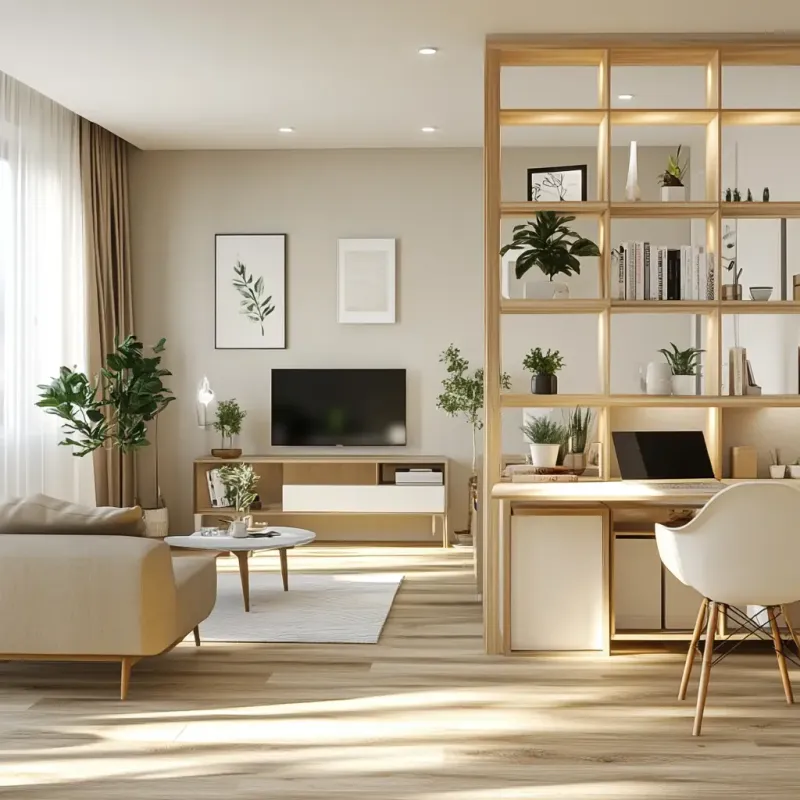
Creating distinct functional areas transforms a bowling-alley layout into a purposeful space. Imagine having a conversation nook at one end and a media center at the other.
By establishing clear zones, family members can engage in different activities simultaneously without disturbing each other. Just ensure each section flows naturally into the next for a cohesive look.
2. Use Rugs to Define Areas
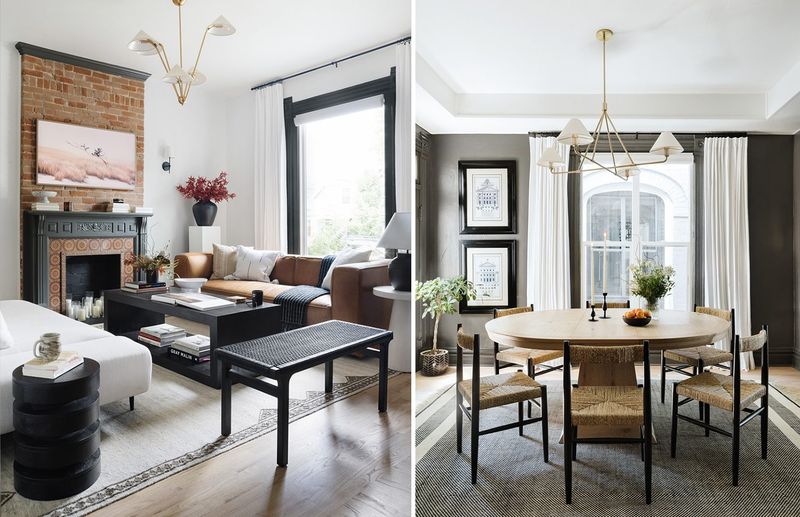
Area rugs work magic in long rooms by visually separating spaces without walls. Picture two complementary rugs—one anchoring your sofa arrangement, another defining a dining or work area.
When selecting multiple rugs, choose pieces that share at least one color to maintain visual harmony. Smart rug placement instantly communicates to guests how each space functions.
3. Choose Low-Profile Furniture
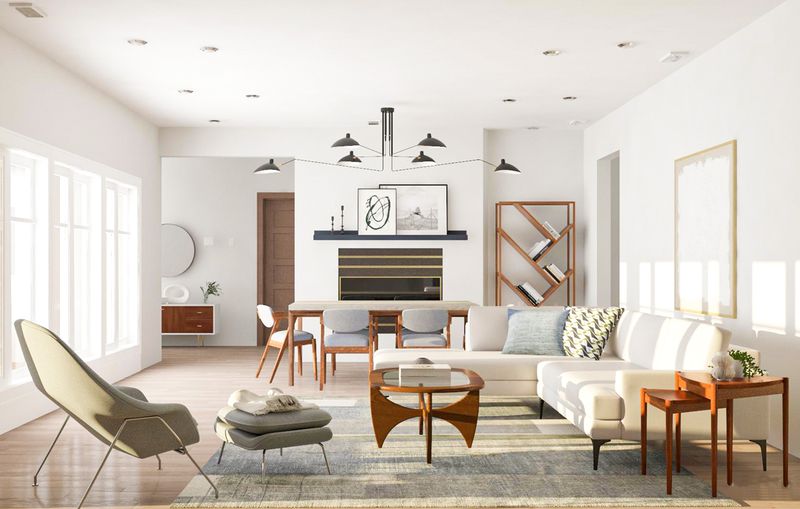
Bulky, tall pieces can make narrow spaces feel cramped and overwhelming. Selecting furniture with clean lines and lower heights creates breathing room above eye level.
Mid-century modern pieces often work beautifully in challenging layouts due to their sleek profiles and raised legs. Low-slung sofas paired with armless chairs allow light and sight lines to flow uninterrupted through the space.
4. Incorporate Vertical Elements
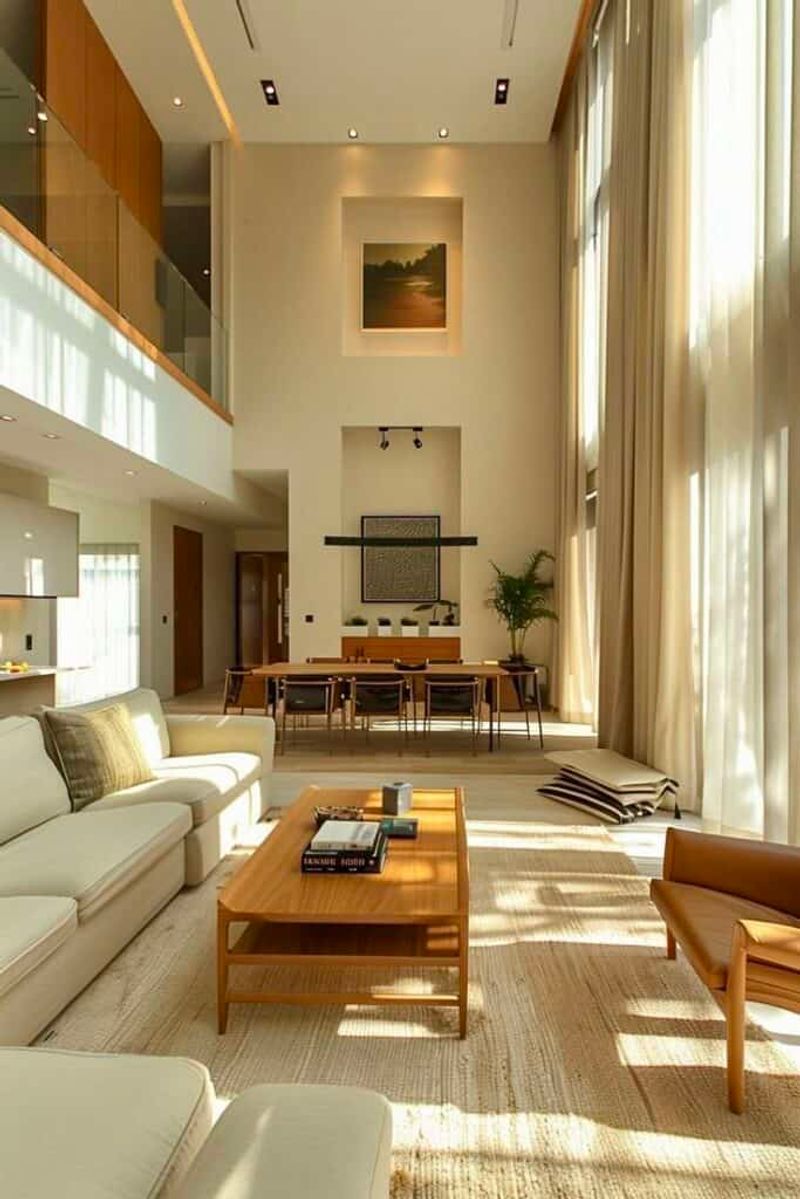
Drawing the eye upward creates balance in lengthy rooms where horizontal dimensions dominate. Floor-to-ceiling bookshelves or dramatic drapery panels introduce much-needed verticality.
Consider a statement chandelier or pendant light that commands attention from above. Vertical stripe patterns on accent walls can visually adjust room proportions, making the space appear more balanced and less tunnel-like.
5. Opt for Light, Reflective Colors
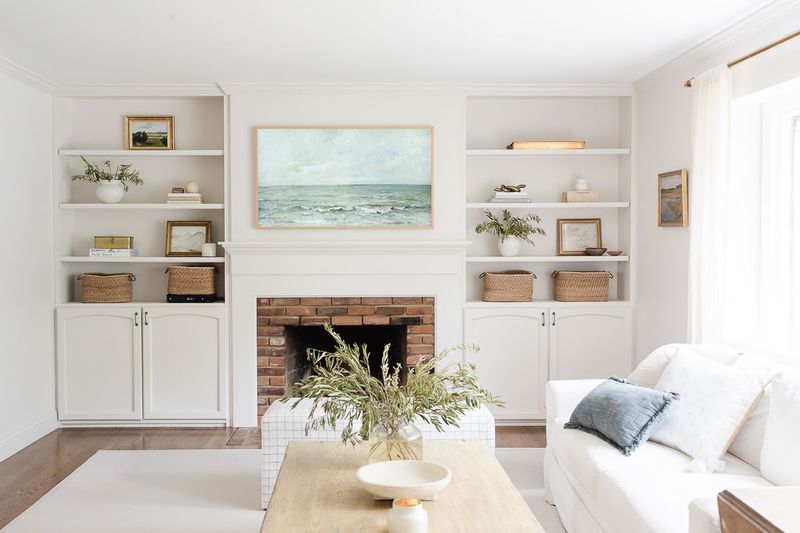
Bright whites and soft neutrals prevent long rooms from feeling like endless tunnels. Light bounces off pale walls, creating an airy, expansive atmosphere that counteracts the cramped feeling narrow spaces often produce.
Accent with deeper tones through accessories rather than major elements. For added dimension, consider a subtle tone-on-tone pattern for walls or a pearlescent finish that captures and plays with available light.
6. Arrange Seating for Conversation
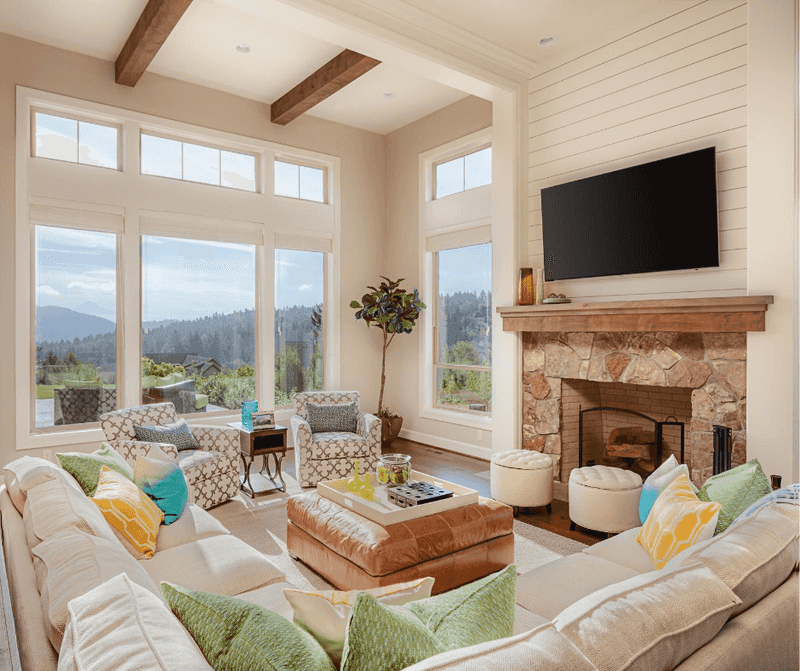
Face-to-face furniture arrangements foster connection in stretched spaces. Instead of pushing everything against walls, float seating groups in the center to create intimate conversation areas.
L-shaped sectionals work wonderfully as room dividers while providing ample seating. Remember that people should never need to shout across the room to communicate—keep conversation distances comfortable by creating multiple intimate seating clusters.
7. Add Multiple Light Sources
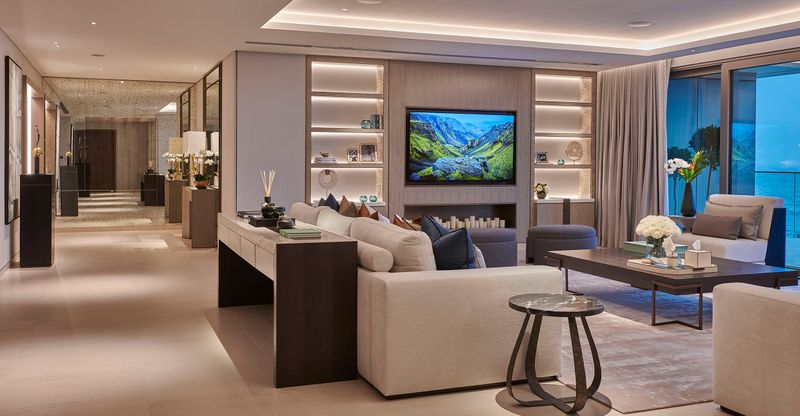
Banish dark corners by layering lighting throughout your elongated space. Combine overhead fixtures, wall sconces, floor lamps, and table lamps to create a warm, inviting atmosphere.
Each functional zone deserves its own dedicated lighting that can be controlled independently. Smart placement of light sources guides the eye through the room and highlights architectural features or artwork that might otherwise be overlooked.
8. Use Mirrors to Enhance Depth
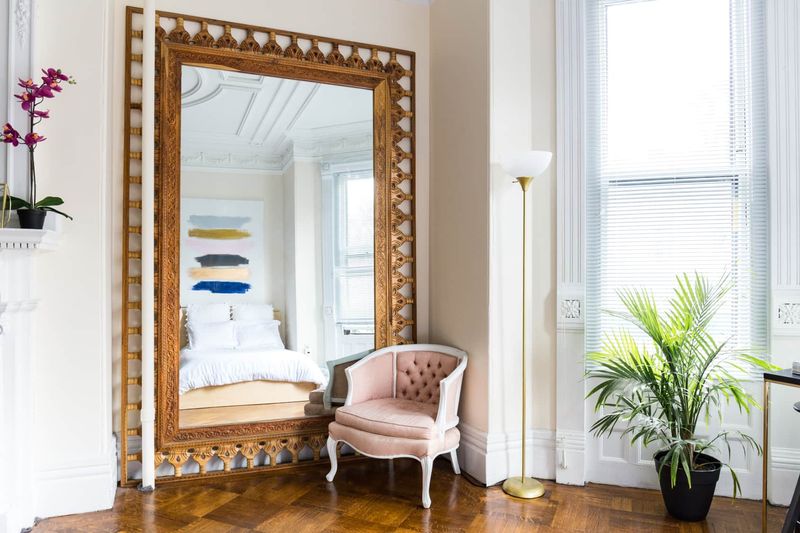
Strategically placed mirrors perform visual magic in narrow spaces. Positioning a large mirror on the short end wall creates an illusion of continuing space, effectively “extending” the room’s perceived dimensions.
Mirrors placed opposite windows multiply natural light and bring outdoor views deeper into the interior. For maximum impact, choose oversized mirrors that make a dramatic statement while functionally expanding the space.
9. Mix Textures for Warmth
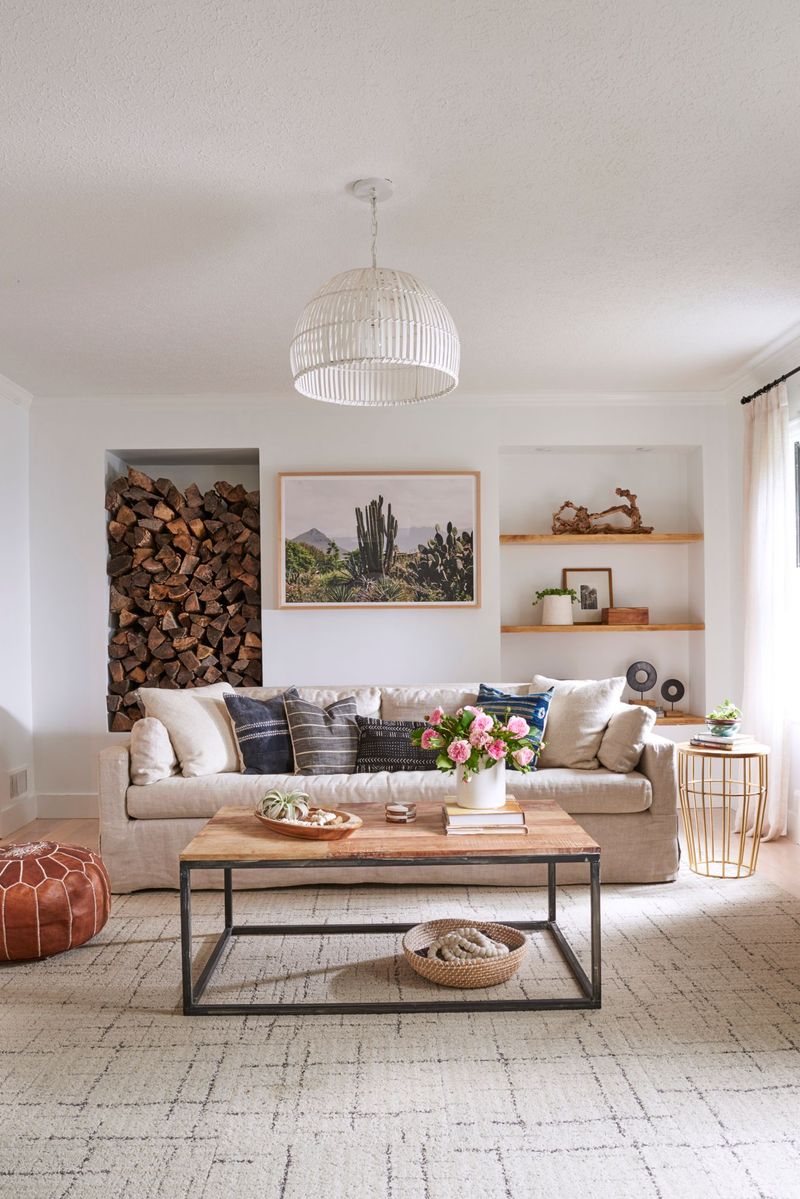
Long rooms risk feeling sterile without thoughtful texture variation. Layering plush throws, nubby pillows, smooth leather, and natural wood elements creates visual interest and tactile comfort.
Incorporate materials that invite touch—a shaggy wool rug underfoot, velvet accent chairs, or grasscloth wallpaper. Varying textures helps break up the tunnel effect by creating natural stopping points for the eye as it travels through the space.
10. Include Statement Art Pieces
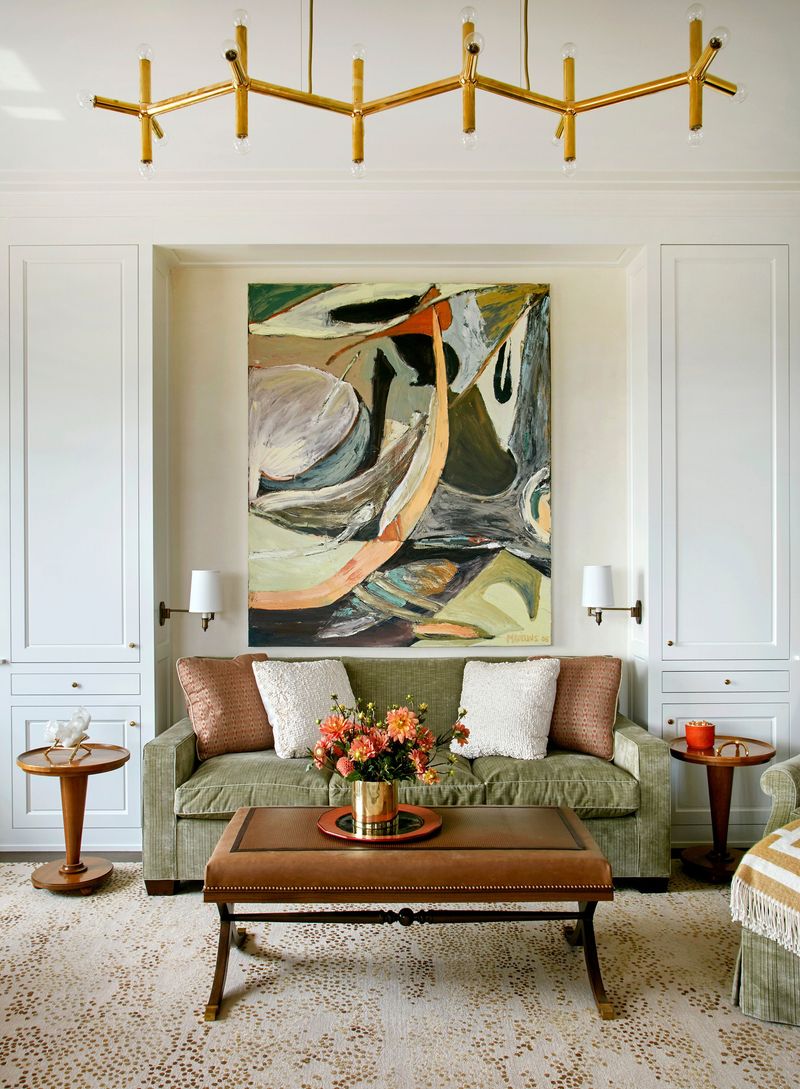
Oversized artwork creates powerful focal points that interrupt the tunnel vision effect of long rooms. A large canvas centered on the longest wall immediately draws attention and anchors the space.
Gallery walls work beautifully too, especially when arranged in a horizontal configuration that complements the room’s shape. When selecting art, consider pieces with perspective or depth that visually expand the space rather than flattening it.
11. Balance Large and Small Furniture
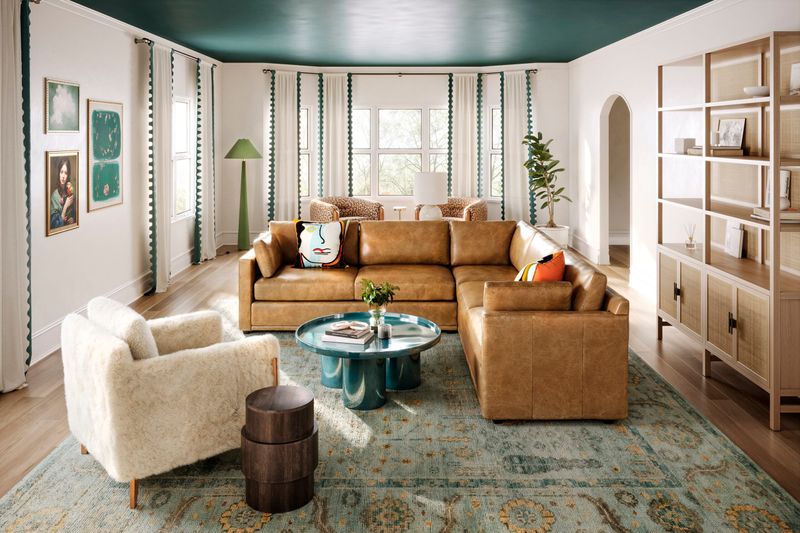
Mixing furniture scales prevents monotony in extended spaces. Pairing a substantial sectional with delicate side tables creates dynamic tension that keeps the eye moving throughout the room.
Avoid the temptation to choose only small pieces—a common mistake that results in disjointed, uncomfortable spaces. Strategic placement of one or two larger anchor pieces grounds the design while smaller accents add personality without overwhelming the layout.
12. Use Open Shelving Strategically
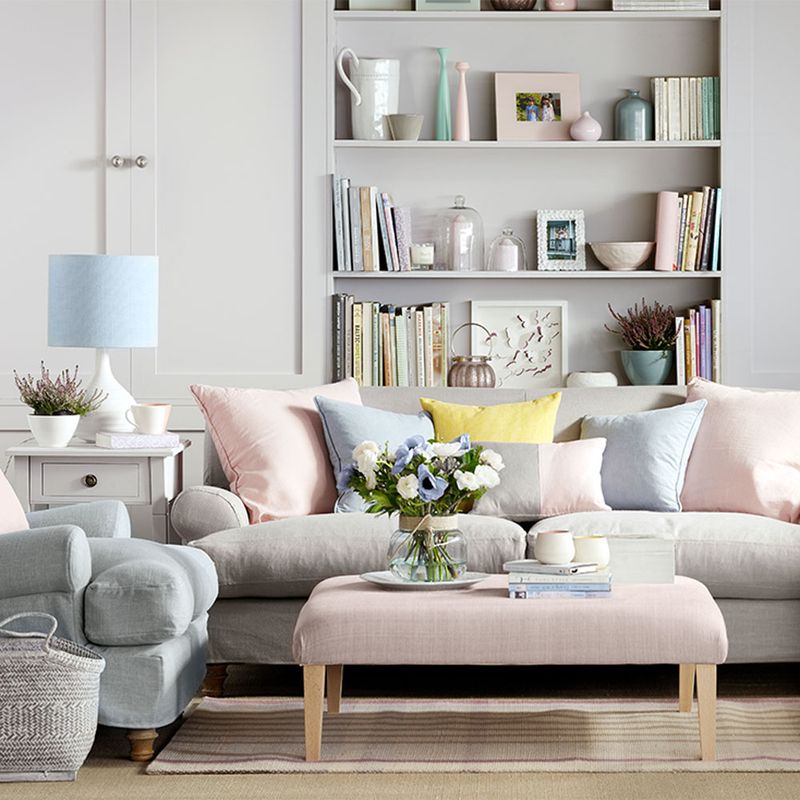
Floating shelves installed perpendicular to long walls create visual breaks that interrupt the bowling alley effect. Unlike solid bookcases, open shelving maintains airiness while providing display space for treasured objects.
Arranging items with varying heights and visual weights creates rhythm across the shelves. Remember to incorporate negative space—leaving some shelves partially empty allows the eye to rest and prevents the cluttered feeling that can overwhelm narrow rooms.
13. Consider Built-In Storage
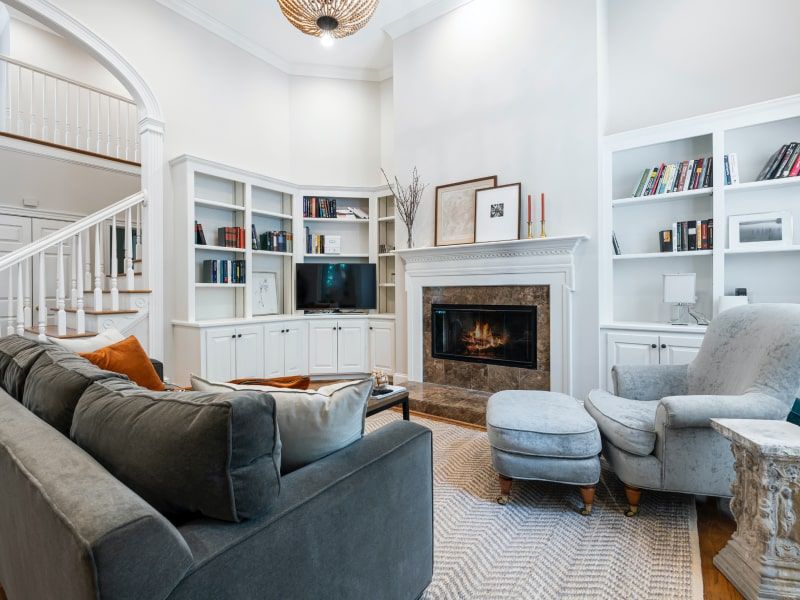
Custom cabinetry maximizes functionality without sacrificing precious floor space in narrow rooms. Built-ins that hug the walls provide storage while maintaining clean sight lines through the space.
Window seats with hidden storage underneath make brilliant use of often-wasted areas. Rather go with floor-to-ceiling built-ins on end walls, which add architectural interest while providing abundant storage for everything from books to board games.
14. Anchor Spaces with Coffee Tables
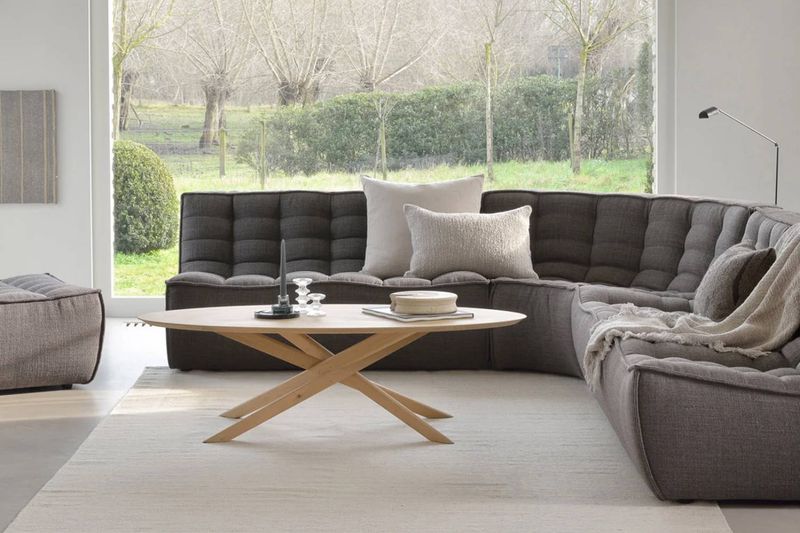
Coffee tables serve as both functional surfaces and visual anchors in floating furniture arrangements. For extra-long rooms, consider using two matching coffee tables placed in separate seating zones.
Round or oval tables soften the linear feel of narrow spaces and improve traffic flow around seating areas. Clear acrylic or glass options maintain openness while providing functionality, making them smart choices for visually lightening the space.
15. Add Greenery Throughout
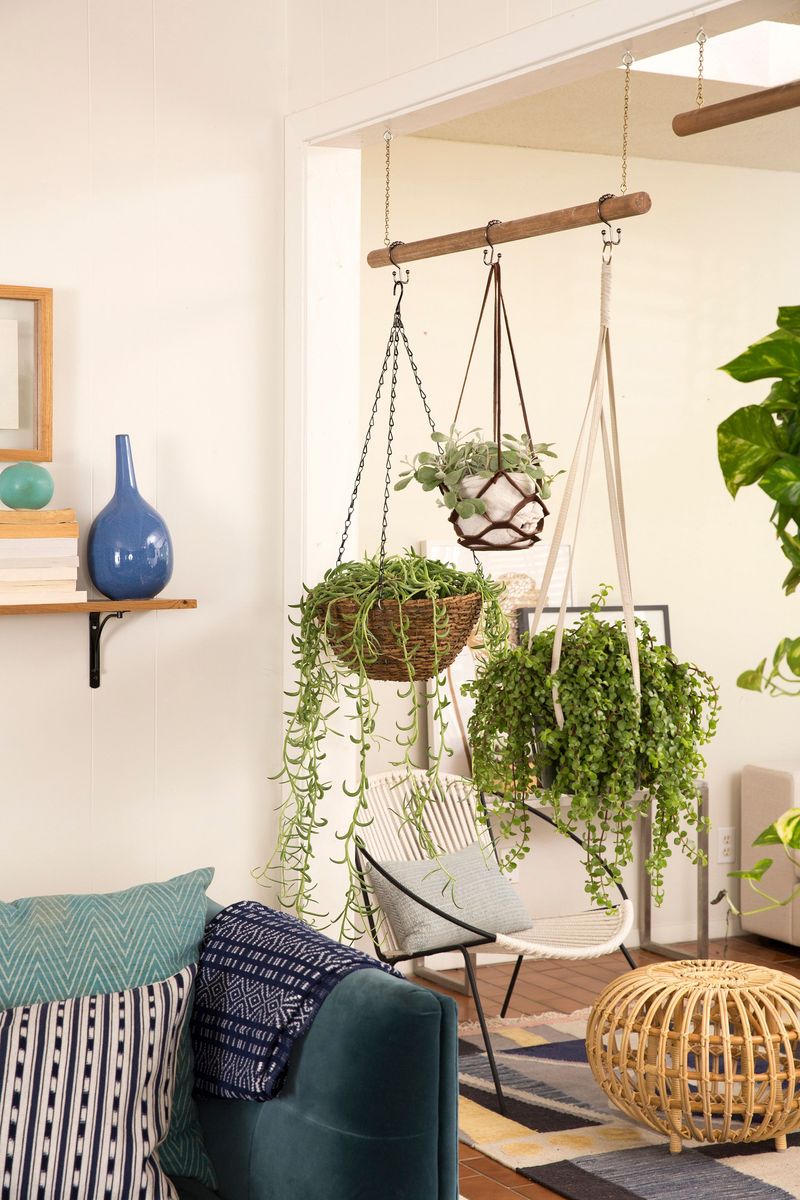
Plants breathe life into stretched spaces and create natural dividers between functional zones. Tall floor plants like fiddle leaf figs or bird of paradise make excellent room dividers without blocking light.
Cascading plants on shelves or hanging from ceiling hooks add vertical interest. Distributing greenery throughout the room—rather than clustering all plants in one area—creates rhythm that guides the eye naturally through the space while improving air quality.
16. Keep Traffic Flow Clear
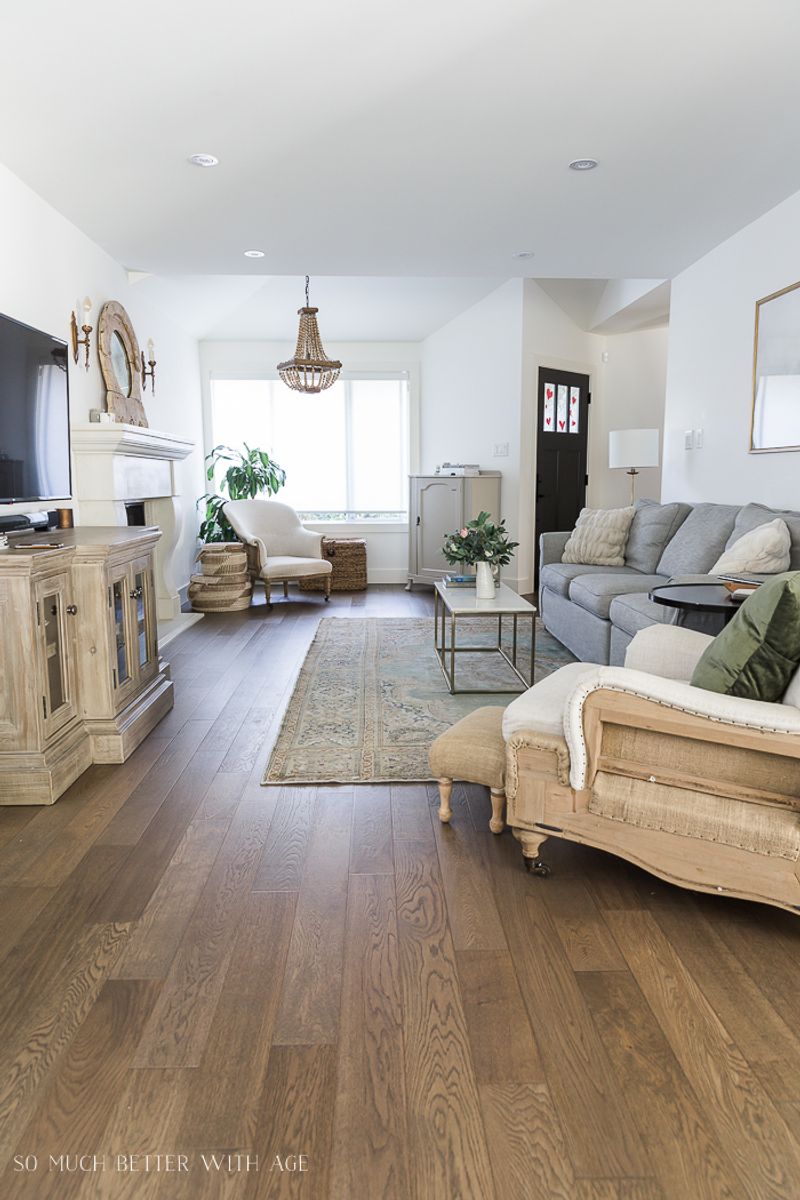
Maintaining an unobstructed pathway through lengthy rooms ensures both functionality and visual comfort. Aim for a minimum 30-inch clearance for main walkways—wider is better if space allows.
Float furniture away from walls to create breathing room around the perimeter. Carefully think about furniture placement from multiple entry points to ensure smooth movement through the space without awkward detours or obstacles that disrupt the room’s natural flow.
17. Use Curtains to Soften Edges
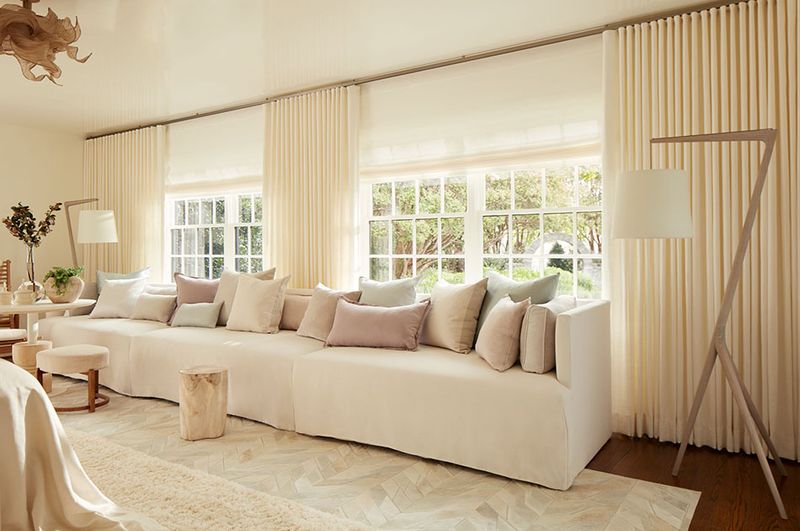
Floor-length drapery softens harsh angles and absorbs sound in long, echo-prone spaces. Hanging curtains higher than window frames creates an illusion of taller ceilings and grander proportions.
Rooms featuring windows along a long wall benefit from consistent window treatments that unify the space. Choosing fabric with subtle vertical patterns can emphasize height, while horizontal patterns help create a wider visual effect—tailored to address the room’s unique proportions.

